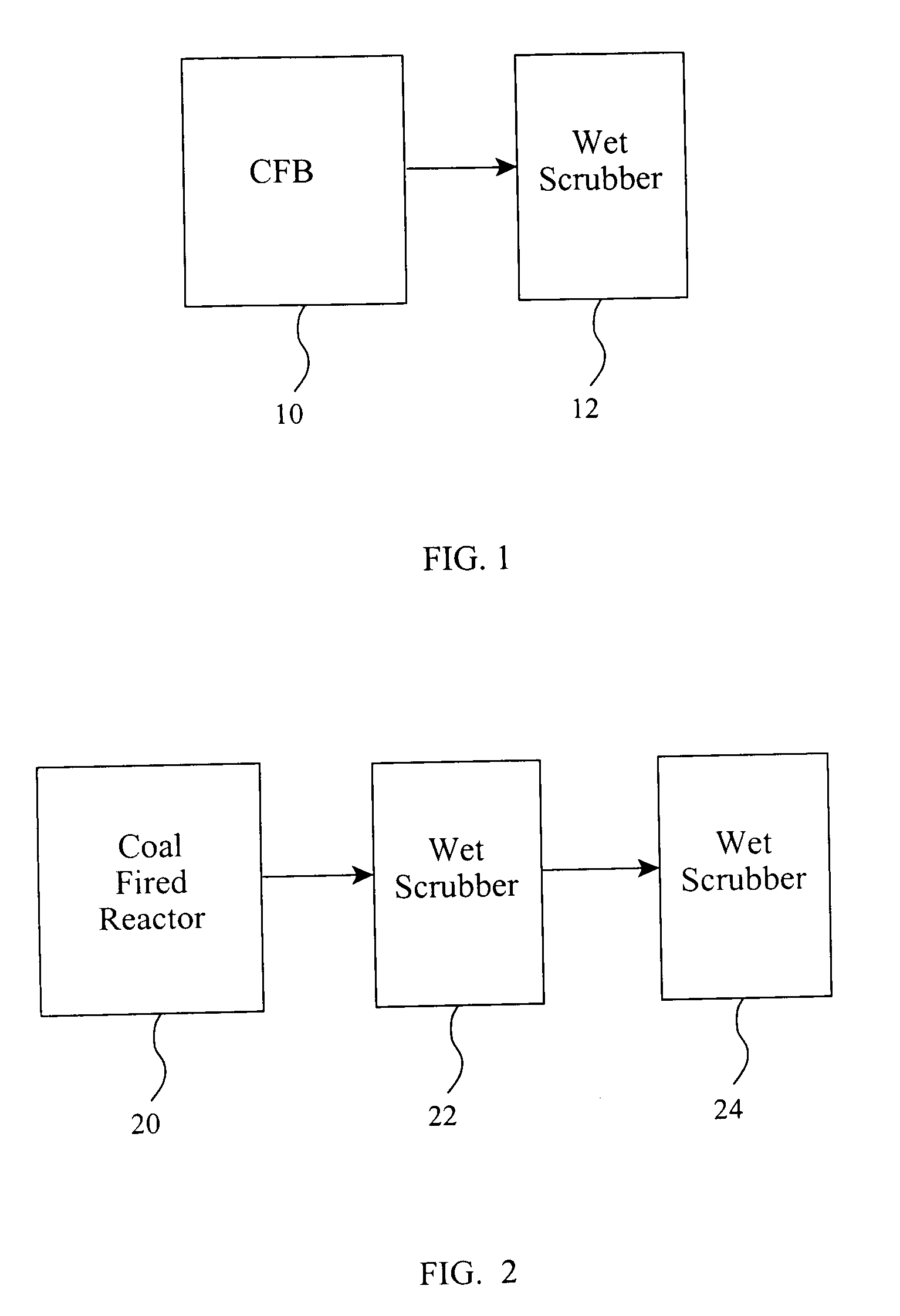Scrubbing systems and methods for coal fired combustion units
a technology of scrubber and combustion unit, which is applied in the direction of emissions prevention, combustion types, separation processes, etc., can solve the problems of reducing the ability of cfb reactors limiting the use of emission control systems in firepower plants, and reducing the ability of pc units to produce toxic emissions, etc., to achieve the effect of improving ability and reducing emissions
- Summary
- Abstract
- Description
- Claims
- Application Information
AI Technical Summary
Benefits of technology
Problems solved by technology
Method used
Image
Examples
example 1
[0042] A 250 MWe (net) CFB reactor, firing 3% sulfur Eastern Bituminous coal, is retrofitted with a wet scrubber. The total gas weight exiting the boiler is about 2,543,000 lb / hr. Providing limestone sufficient to achieve a 90% reduction in SO2 from the CFB results in production of about 2089 lb / hr (about 261 ppm) of SO2. The wet scrubber is a spray tower absorber which reduces the quantity of SO2 exiting the wet scrubber to about 80 lb / hr (10 ppm). This system provides an overall SO2 reduction of about 99.6%. Such a reduction eliminates about 7,920 tons of SO2 per year.
example 2
[0043] A 400 MWe (net) PC reactor, firing 1% sulfur western bituminous coal having a standard baghouse for particulate removal, is retrofitted with a double wet scrubber. The total gas weight exiting the boiler is about 4,660,000 lb / hr. With no SO2 reduction system, SO2 emissions from the boiler outlet are about 11,700 lb / hr. The wet scrubbers are a combination of a spray tower absorber and a mobile bed scrubber which reduces the quantity of SO2 exiting the wet scrubbers to about 117 lb / hr. This system provides an overall SO2 reduction of about 99%. Such a reduction eliminates about 46,120 tons of SO2 per year.
PUM
| Property | Measurement | Unit |
|---|---|---|
| soluble | aaaaa | aaaaa |
| volume | aaaaa | aaaaa |
| concentration | aaaaa | aaaaa |
Abstract
Description
Claims
Application Information
 Login to View More
Login to View More - R&D
- Intellectual Property
- Life Sciences
- Materials
- Tech Scout
- Unparalleled Data Quality
- Higher Quality Content
- 60% Fewer Hallucinations
Browse by: Latest US Patents, China's latest patents, Technical Efficacy Thesaurus, Application Domain, Technology Topic, Popular Technical Reports.
© 2025 PatSnap. All rights reserved.Legal|Privacy policy|Modern Slavery Act Transparency Statement|Sitemap|About US| Contact US: help@patsnap.com

